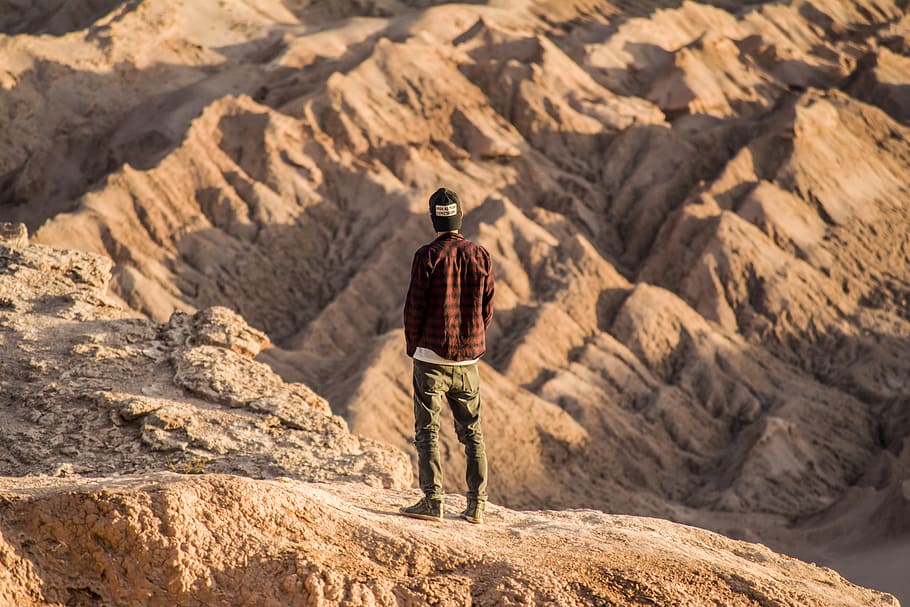
Dressing up for outdoor activities isn’t as easy as you think. When you’re planning your hiking wardrobe, the questions are aplenty: “Can I really hike in baggy jeans?” “Can I still look cute in khakis?” “Will this be too hot?” And the most common question of all: “Out of all of these things, what do I actually need?”
When it comes to durability versus aesthetics, there isn’t much overlap. Of course, there’s no standard hiking uniform that will make you feel and look and like a pro. But knowing where to find clothes that check both your form and function requirements can be tough. Will your danner shoes go well with those skinny jeans that you love? Should you even be wearing skinny jeans to a hike?
How does one dress for the outdoors without looking like a store-brand hiker?
Is It Ok to Wear an Old T-Shirt and Yoga Pants?
Yes. Many people use their gym clothes for hiking: they’re easy-to-wear, and they’re already in your closet. Also, the popularity of athleisure ensures you can look stylish while you go about your hike. But if you are hiking longer than a few miles, strategic dressing is essential. While it’s tempting to wear your cute crop top for the ‘Gram, prioritize form over function in this case.
If you want to wear leggings or tights, there are some factors to consider. Check the inner fabric’s tag: if they’re made of cotton, best to skip. Most professional hikers will warn you that cotton is THE enemy. It absorbs and holds moisture next to your skin, terrible for insulation and increases your risk of hypothermia. Simply put: if you sweat, get caught in a rainstorm or must cross a creek, you’ll be miserable or in danger.
Tight-fitting leggings will not protect you against mosquitoes. Running tights are not your friend when you’re climbing up mountains.
What Are the Proper Bottoms for Hiking?
Picking a pair of pants for a strenuous outdoor adventure isn’t like choosing clothes for a trip to the mall. In general, you want a pair of pants that won’t easily tear or rip, is appropriate for different climates, won’t stay wet if you get caught in the middle of a storm and must be well-insulated. Again, cotton isn’t an option but synthetics like elastane, nylon and polyester are. These fabrics are engineered to draw sweat away from your body and increase evaporation. It also helps to have bottoms with pockets.
But What About the Tops?
By this time, “cotton kills” is a mantra to keep in mind when picking out clothes. This rule eliminates your favorite flannels and t-shirts. But if you really want to wear them, just layer your clothes. Layers are the key to bridging the gap between form and function. Layering staples include a tee or tank top combined with a vest or a fleece. When it comes to your fabric selection, merino wool is THE BEST fabric for hiking. It can keep you cold when you feel hot, warm you up when it’s cold and manage your body odor (the best part when you’re sweating a lot when you hike).
Consider layering shirts, too. Quick-dry fabric keeps you comfortable during long and sweaty hikes. They are also available in different colors and styles.
If you’re hiking out in cooler weather, a lightweight but well-insulated jacket can keep you warm without the burden of a giant coat.
Can You Accessorize During a Hike?
A cap is great for keeping your hair out of your eyes. They can also keep the sun out of your neck. Plus, hats are available in fun patterns and colors, which enable you to personalize your look. If you’re not a big fan of caps, go for a bandana. It keeps your hair back and covers your forehead from bugs.
Undergarments are also important. Underwear and socks are little pieces of clothing that can make a huge difference. Wear breathable underwear made from synthetic blends like Lycra and nylon. These fabrics can help you deal with odor and moisture better than cotton undergarments.
Finally, What About the Shoes?
Your favorite running shoes are helpful, but they may not last long, especially if you’re hiking in rockier terrains. Running shoes also don’t stand a chance against mud and rocks. Instead of wearing shoes, invest in hiking boots. Boots are sturdy and provide ankle support, which is essential in comfortable hikes.
For socks, remember: stay away from cotton. Go for wool or wool blends.
Local adventures are more fun when you’re dressed for the part. You can go out on a hike and be stylish and comfortable at the same time. As long as you know the right clothes to wear, you can hike fashionably without any pain. And remember: stay away from cotton!


Comments are closed.